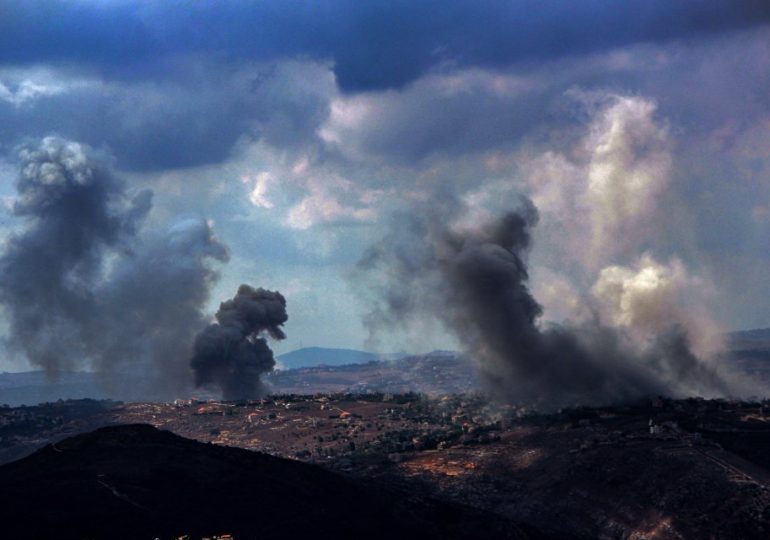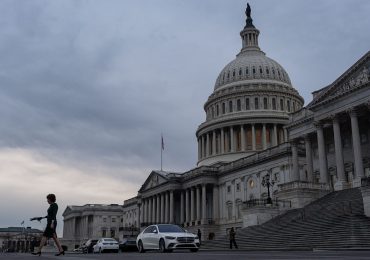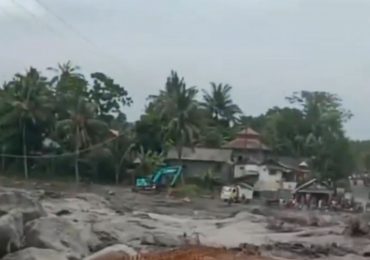LEBANON has suffered its deadliest day in a generation after almost 500 people were killed in Israeli airstrikes.
It comes just days after Israel wiped out Hezbollah commanders claimed to be plotting a devastating October 7-style massacre.
AlamySmoke from heavy Israeli air raids billows from the southern Lebanese village of Taibeh[/caption]
Smoke billows from the site of an Israeli airstrike in Marjayoun, near the Lebanon-Israel border
AFPA congested highway along the southern entry to Beirut[/caption]
APCars sit in traffic as they flee the southern villages amid Israeli airstrikes[/caption]
AFPIsraeli fighter jets fly over the port city of Haifa[/caption]
Israel has vowed to do “whatever is necessary” to wipe Hezbollah from its northern border – sparking some of the heaviest cross-border exchanges of fire since hostilities flared last October.
Hundreds of Hezbollah targets were blitzed by Israel on Monday as the offensive to hunt terror kingpins – dubbed Northern Arrows – continues.
At least 492 were killed and 1,645 injured, including 35 children.
The grim death toll is the highest daily tally since the end of the 1975-90 civil war.
Ten of thousands of residents fled from the south in desperate search of shelter as Israel pounded Lebanon with bombs from the air.
The main highway out of the southern port city of Sidon was jammed with cars heading toward Beirut in a staggering mass exodus.
Families from south Lebanon loaded cars, vans and trucks with belongings and people, sometimes multiple generations in one vehicle.
As bombs rained down, children crammed onto parents’ laps and suitcases were tied to car roofs. Highways north were gridlocked.
Israel has warned residents in southern and eastern Lebanon to evacuate ahead of its widening air campaign against Hezbollah.
But the UK’s foreign office – while continuing to advise Brits to leave while flights are available – has stopped short of ordering an evacuation.
Fears of an all-out war in the region have been stoked by the escalation – with Lebanon still reeling from two deadly attacks on communication devices last week.
After almost a year of war against Hamas in Gaza on its southern border, Israel is shifting its focus to the northern frontier.
It is where Iran-backed Hezbollah has been firing rockets into Israel in support of Hamas, also backed by Iran.
Israel claims it has foiled a plot to stage an assault similar to the devastating October 7 assault by Palestinian terror group Hamas.
President Isaac Herzog said Hezbollah commanders killed in strikes on Friday in Beirut were meeting to plan a shocking massacre.
Israel’s Rear Admiral Daniel Hagari said Israel is “not looking for wars” but warned its army is in “full readiness”.
Describing civilian casualties as a “tragedy”, he insisted Israel “makes vast efforts not to hit civilians and make every effort to mitigate harm to civilians”.
Israeli Prime Minister Benjamin Netanyahu meanwhile told Lebanese citizens: “Israel’s war is not with you, it’s with Hezbollah.
“For too long Hezbollah has been using you as human shields.”
AFPSmoke billows from the site of an Israeli airstrike on the eastern areas of Baalbeck in the Bekaa valley[/caption]
APCivil defense workers carry an elderly citizen who fled from the south as he arrives at a school turned into a shelter in Beirut[/caption]
ReutersIsrael’s Iron Dome missile defense system intercepts rockets fired from Lebanon[/caption]
ReutersA man walks on a beach as smoke billows over southern Lebanon[/caption]
The latest bloodshed has prompted the US to deploy more troops to the Middle East amid fears of an all-out war exploding on the Lebanese border.
The Department of Defense said “additional” service members will be joining up with the 40,000 fighters already in the Middle East.
A dozen US warships and fighter jet squadrons are also in the region on standby.
It is still unclear the exact number of troops being sent over or where they are being stationed.
The Pentagon has already bolstered its US Central Command since tensions in the Middle East reached boiling point almost a year ago.
An additional 7,000 troops were sent across in the wake of the October 7 attacks by Hamas.
Navy warships were quickly deployed across the region, with some in the Red Sea and another six warships in the Eastern Mediterranean.
Four squadrons of fighter jets are also in the Middle East, as well as advanced F-22 fighter jets, which arrived last month, Military Times reported.
Their presence in the Middle East is designed to help defend Israel in their war as well as to protect US and allied assets.
The Pentagon’s General Pat Ryder also urged any US citizens to leave Lebanon as soon as they could.
And this morning, Hezbollah said it had launched several attacks on Israeli military targets, including an explosives factory 60 km into Israel, with the “Fadi” series of rockets.
It said it attacked the explosives factory around 4am (1am GMT) and the Megiddo airfield three separate times overnight.
The European Union’s foreign policy chief has warned the escalation between Israel and Hezbollah is “almost a full-fledged war”.
Josep Borrell said: “This situation is extremely dangerous and worrying.
“If this is not a war situation, I don’t know what you would call it.”
Pager and walkie-talkie strike
The spike in fighting follows the coordinated pager and walkie-talkie blitz last week with Israel sabotaging communications devices.
The attacks were aimed at Hezbollah and hit the terror group’s fighters and civilians in Lebanon and Syria.
The strikes, which hit Tuesday and Wednesday, killed at least 39 and left thousands more injured.
Doctors in Lebanon have been overwhelmed by casualties after two waves of blasts – with many left blinded.
Skilled physicians say they have never had to surgically remove more eyes before as Hezbollah’s boss labelled the strikes a possible “declaration of war” from Israel.
One of those injured was the Iranian envoy to the country who has reportedly lost an eye.
Hezbollah’s boss Hassan Nasrallah said the group intends to seek revenge for the attacks that “crossed over all the red lines” and will not stop until the war in Gaza ends.
Iranian foreign ministry spokesman Nasser Kanani said he “condemned the terrorist act of the Zionist regime… as an example of mass murder”.
Israel reportedly planted the explosives inside the pagers in a years’ long operation that involved firms in Taiwan and Hungary.
Iran’s Revolutionary Guard Corps has ordered all members to stop using any types of communication devices, Reuters reports.









